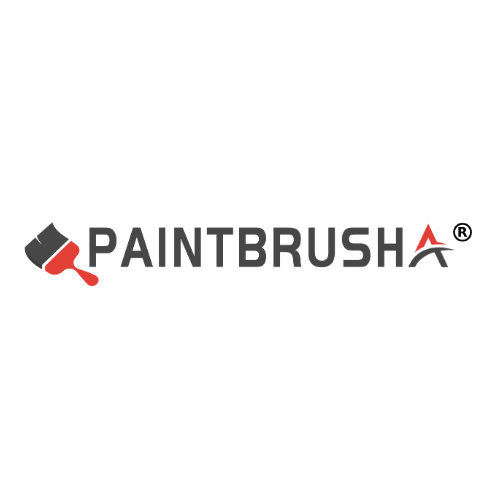The application techniques of wall painting brushes on different walls vary depending on the material, condition and painting requirements of the wall. Here are some tips for using wall painting brushes for common wall types:
First, ordinary latex paint walls
Wall surface pretreatment:
Use a scraper to smooth out the parts where the wall plaster has fallen off, ensuring that the wall surface is clean, flat and dry.
If necessary, you can gently sand the wall with sandpaper to enhance the adhesion of the paint.
Brush selection:
For ordinary latex paint walls, wool brushes are a good choice because they can evenly cover the color and are suitable for smooth walls.
According to the painting requirements, brushes of different sizes and shapes can also be prepared, such as flat brushes, round brushes, etc.
Painting skills
Before painting, apply a primer or light-colored pigment as a base coat to facilitate subsequent coloring.
When mixing colors, pour the pigment onto the palette and stir thoroughly until the color is uniform.
When using a wall painting brush, keep the force even to avoid uneven color or missed areas.
For large-scale coloring, tools such as roller brushes or spray guns can be used to improve efficiency.
Second, rough walls (such as cement walls and brick walls)
Wall surface pretreatment:
Use a scraper or sandpaper to smooth out the uneven parts of the wall to ensure that the wall is basically flat.
If the wall surface is too rough, you can consider using putty or leveling materials for repair.
Brush selection:
For rough walls, it is recommended to use pighair brushes or Wolf hair brushes, as these brushes can absorb a large amount of paint and are less likely to slip.
You can also choose some brushes with harder bristles to deal with the rough surface of the wall.
Painting skills
Because rough walls have strong water absorption, the paint may dry quickly, so the painting speed needs to be increased.
The dry painting method or thick coating method can be adopted to create a rich texture effect of the pigment on the wall surface.
Pay attention to controlling the amount of pigment used to avoid excessive flow or accumulation on the wall surface.
Iii. Special Material walls (such as glass, tiles)
Wall surface pretreatment:
For glass walls, it is necessary to carry out cleaning treatment first to ensure that the surface is free of grease, dust and other stains.
For tiled walls, it is necessary to check for problems such as hollowing and cracks, and make repairs if necessary.
Brush selection:
When painting on glass, you can choose some fine brushes, such as outlining pens and detail pens.
For tiled walls, ordinary wall painting brushes or roller brushes can be used, but attention should be paid to the adhesion of the paint.
Painting skills
When painting on glass, it is necessary to choose pigments suitable for the glass, such as acrylic paint mixed with exterior wall paint for color matching.
The pigment should be mixed as dry as possible to avoid flowing or spreading on the glass.
When painting, you can adopt the method of multi-layer smudging to gradually increase the depth and layering of the colors.
For tiled walls, a primer or a special coating for tiles can be applied as a base coat first to enhance the adhesion of the pigment.
Iv. General Skills
Protect the surrounding environment
Before starting to paint, use items such as masking tape, newspapers or plastic sheeting to protect the surrounding ground, furniture and other items to avoid contamination by the paint.
Color matching and color testing
Before the formal painting, first mix and test the colors on a small wall or color palette to ensure that the colors meet the expected effect.
Maintain uniform force:
When using a wall painting brush, keep the force even to avoid uneven color or missed areas.
For the detailed parts, a small brush can be used for meticulous depiction.
Clean the brushes regularly:
During the painting process, clean the paintbrush regularly to prevent the brush from hardening or deforming due to residual paint.
Clean with mild soapy water or a professional brush cleaner.
Inspection and Correction
During the painting process, regularly step back to observe the overall effect and check if there are any omissions or areas that need adjustment.
After completion, wait for the pigment to dry completely before conducting the final inspection and correction.
By applying the above techniques, the creation of wall paintings can be completed more smoothly, presenting an ideal artistic effect. At the same time, it is also very important to choose the appropriate brushes and paints according to the material and condition of the wall.
